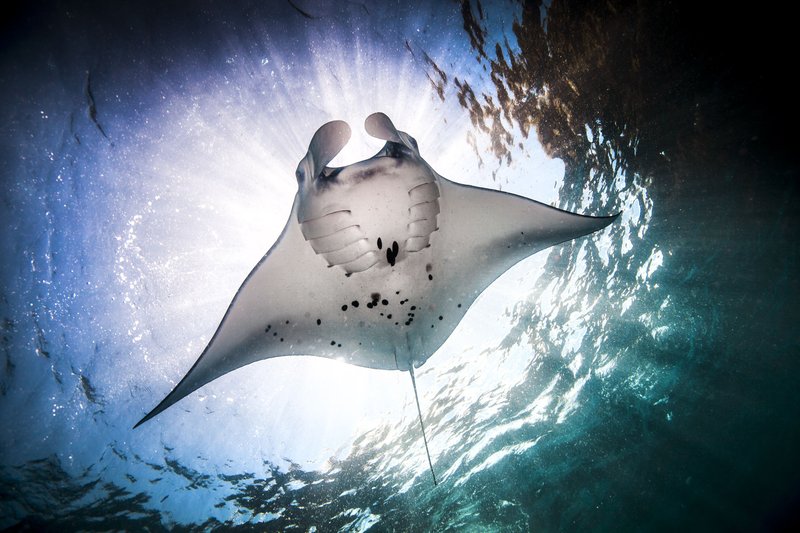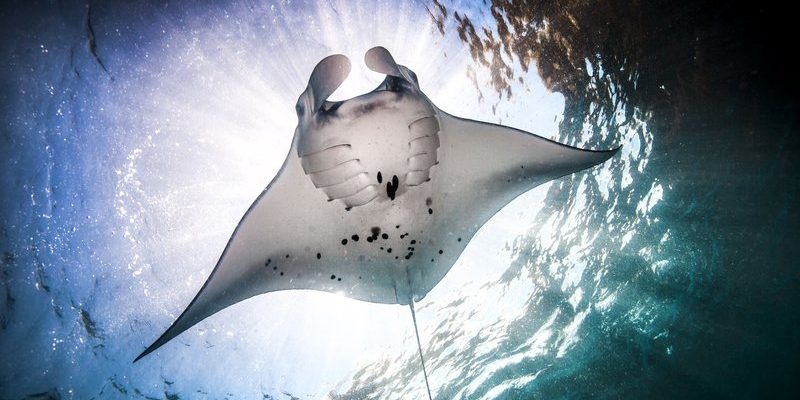
Let’s dive into why manta rays are more than just stunning sights for divers and snorkelers. These amazing animals contribute to their environments in some pretty significant ways. Just as bees are essential to our gardens, mantas help maintain the balance of marine life. They’re not just passive participants; they actively engage in the ocean’s complex food webs and nutrient cycles.
What Are Manta Rays?
Manta rays belong to the family Mobulidae and are closely related to sharks. There are two main species: the giant manta ray (Manta birostris) and the reef manta ray (Manta alfredi). These creatures are known for their characteristic flattened bodies and large pectoral fins, which allow them to move gracefully through the water. They can be found in warm tropical and subtropical waters around the globe.
What’s fascinating is how intelligent and social these animals are. Manta rays display behaviors like leaping out of the water and swimming in synchronized groups. Studying them reveals a lot about their social structures and communication methods, making them a subject of interest for marine biologists.
Manta Rays and Their Feeding Habits
One of the most crucial roles manta rays play is as filter feeders. They primarily consume plankton, which are tiny organisms drifting in the ocean. Imagine a vacuum cleaner effortlessly sucking up dust; that’s how manta rays feed! They swim with their mouths wide open, filtering out their food through gill rakers.
By feeding on plankton, they help regulate these populations, ensuring that the food web remains balanced. Healthy plankton populations are vital for other marine life, including fish and larger animals. So, when manta rays thrive, the entire ecosystem benefits.
Contributions to the Marine Food Web
Manta rays are sometimes referred to as “keystone species.” This term describes organisms that have an outsized impact on their environment compared to their abundance. By keeping plankton populations in check, manta rays help support fish species that are crucial for commercial fishing and recreational activities.
You might be wondering how this reflects on the overall health of marine ecosystems. Well, a balanced food web promotes biodiversity. This means more species can coexist, contributing to vibrant coral reefs and nurturing life in the ocean. Without manta rays, we could see a rise in plankton, which might sound good initially, but it can lead to issues like algal blooms that suffocate marine habitats.
The Role of Manta Rays in Nutrient Cycling
Here’s the thing: manta rays don’t just contribute as predators; they also play a part in nutrient cycling. When they feed, they deposit waste that enriches the water with nutrients. This process supports the growth of phytoplankton, the foundation of the marine food chain.
Moreover, as mantas migrate across vast distances, they transport nutrients from one area to another. Think of it like a delivery system, where they carry essential nutrients to areas in need, promoting healthy ecosystems even far from where they initially fed. This movement is crucial for maintaining the health and productivity of marine environments.
Threats Facing Manta Rays
Unfortunately, manta rays face several threats that jeopardize their populations and, by extension, the health of marine ecosystems. Overfishing is a major concern; they are often caught accidentally in fisheries. Moreover, their gill rakers are highly valued in traditional medicines, leading to targeted hunts.
Habitat loss, particularly from pollution and coastal development, also poses a serious threat. When water quality deteriorates, it can have devastating effects on their feeding grounds. Just like we need clean air to breathe, manta rays need clean water to thrive. Conservation efforts are essential to protect these incredible creatures and ensure they can continue to fulfill their ecological roles.
Conservation Efforts for Manta Rays
Recognizing the importance of manta rays, various organizations and governments are stepping up to protect them. Marine protected areas (MPAs) have been established to shield their habitats from overfishing and pollution. Initiatives to educate local communities on the importance of manta rays are also crucial.
Here’s a fun example: in places like the Maldives, diving tourism has become a significant way to conserve manta rays. Tourists are drawn to see these magnificent animals, which encourages local economies to prioritize their protection over exploitation. It’s a win-win situation where both the environment and local communities benefit.
How You Can Help
You might be wondering how you can contribute to the conservation of manta rays, even if you’re far from the ocean. Here are a few straightforward ways to make a difference:
- Support sustainable seafood: Choose seafood that is caught or farmed in environmentally friendly ways.
- Participate in local beach clean-ups: Keeping our beaches clean helps maintain the health of our oceans.
- Spread awareness: Talk about the importance of manta rays and marine conservation with friends and family.
- Support conservation organizations: Donating or volunteering for organizations dedicated to marine life can have a lasting impact.
Manta rays are more than just striking inhabitants of our oceans; they are integral to maintaining the balance of marine ecosystems. By filtering plankton and aiding in nutrient cycling, their roles extend far beyond their immediate surroundings. As we face challenges threatening their existence, understanding these relationships is crucial.
By educating ourselves and supporting conservation efforts, we can ensure that future generations will also marvel at the beauty of manta rays in their natural habitats. So, the next time you think of the ocean, remember the manta ray—an unsung hero gliding through the depths, quietly supporting a vibrant underwater world.

